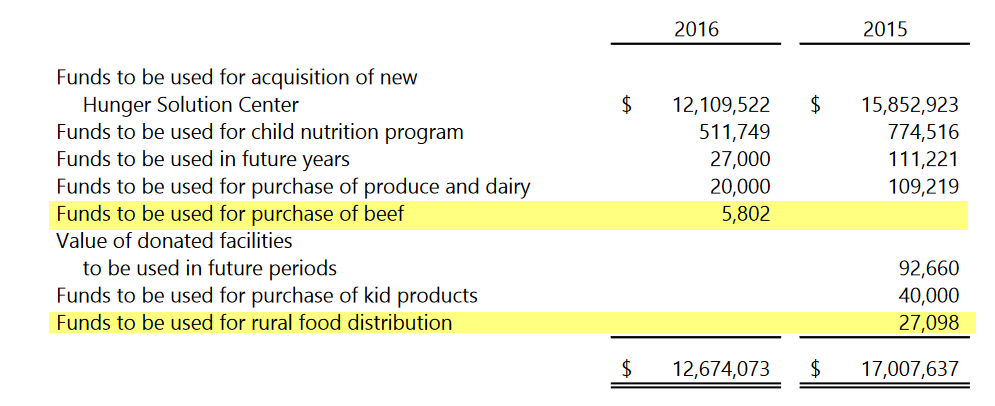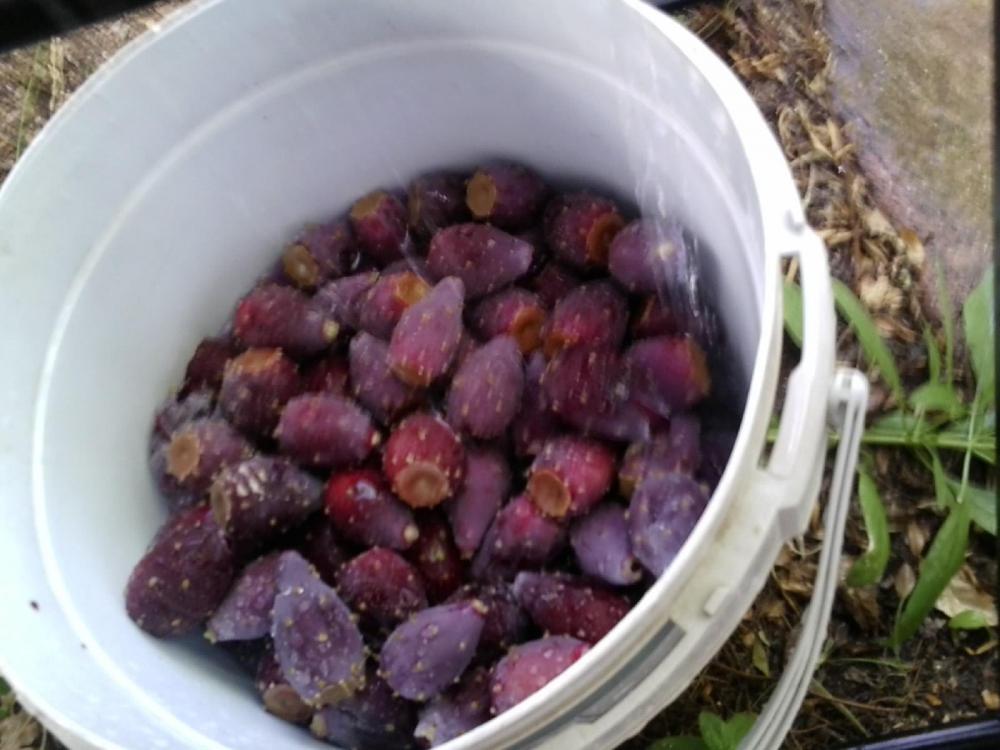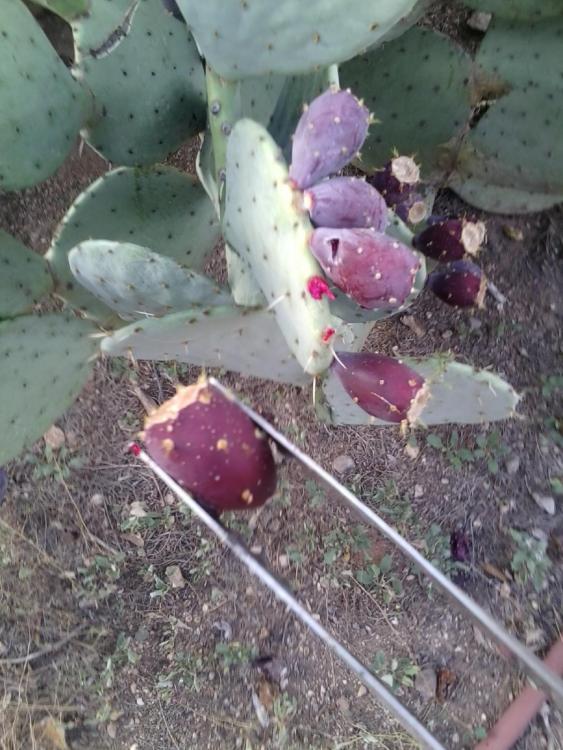-
Posts
2,480 -
Joined
-
Last visited
Content Type
Profiles
Forums
Store
Help Articles
Everything posted by Rebel Rose
-
Thank you, everyone, for the recipes so far. These are exactly what I was hoping for, and will make my load so much lighter! Thanks for all the great suggestions! I can use them all!
-
I love substitution ideas! I include them in nearly every recipe. Soup kitchens and group kitchens often have to work with what they have, or what was donated that week. Except for a few staples, they don't get to "shop" for food. So subbing ideas will be a consistent theme throughout the book.
-
Thanks for the stuffing recipe Lisa, that is great! I make stocks and broths at home, and I plan to include a one-page instruction at the end of the book in a section on stretching the budget. I think it will be a hard sell to most soup kitchens, but the smaller places like safe shelters, where the women have to buy their own food and probably participate in cooking, might welcome the idea. In soup kitchens, it's just not likely they'd devote freezer space to bones or veg scraps, nor will volunteers linger for hours to get the broth/stock simmered and strained. But it all depends on their setup and staff! (My broth tip: caramelize two white onions, sliced, in the pan prior to adding vegetables and water. It gives the resulting broth a darker color and sweeter taste.)
-
I could really use some help with this rather large cookbook project! First, the origin story. I run a gleaning organization (gleanme.org) and I walked into a local hunger mission with 3 crates of beets and kale. I had called ahead and gotten "orders" for how much to bring to each place, but with volunteers sometimes communication in the kitchen is non-existent. So I walk in with all this beautiful, organic produce and the kitchen manager--this is a paid position, mind you--looks at me in total panic and says, "What do you with beets? And kale?" I kid you not, she had no idea how to prepare them. At about the same time, I was asked by a couple of other sites if I could provide recipes to go with the produce. So I started accumulating recipes that use cheap, readily available ingredients and converting them for batches of 10 (makes it easier to do the math for feeding 40-70 people). Next, the reality. Soup kitchens and hunger missions get a lot of boxed and canned goods. Very little in the way of fresh produce, and extremely little meat--which means recipes that can stretch meat are in high demand. Their patrons are often unhealthy--seniors, homeless, pregnant, addicted, diabetic--and soup kitchen fare is often heavy in starches. It's really important to get fresh, nutritious produce into these meals. But another challenge is that paid and volunteer staff alike often have little or no professional training, and rely on an unvarying pattern of scrambled eggs, meatloaf, chili, and macaroni-cheese. So in order to get them to actually make use of the produce we deliver, we have to make it exceptionally easy for them to incorporate seasonal produce into their routine. So, the cookbook is my way of doing this. I hope to make this cookbook available for free to every soup kitchen, hunger mission, homeless shelter, safe shelter, food bank and pantry in the U.S. I would love it if you would help this effort by submitting recipes! Who better to support this project than eGulleteers, right? I’m looking for a number of basic recipes that include seasonal variations and suggestions for other ingredients. Some of the recipes popular in hunger kitchens are meatloaf, lasagna, meaty mac-and-cheese, chili, soups and stews, various pasta combinations. Summer recipes might include frittatas, bean and potato salads, tacos, stir fries and so on. But what I really need are basic recipes that offer exciting, seasonal and versatile variations like a Pumpkin-Pork Meatloaf, or a Peasant Paella. Some basic guidelines: The focus is on fresh fruit and vegetables. Each recipe should highlight or include large quantities of seasonal produce. Please see the sample recipes and follow that format. Please do not submit copyrighted material from other sources unless it is freely available, in which case give attribution to the source. If it's your recipe, please let me know what attribution you would like. I am happy to provide website links for your business, restaurant, or blog! Recipes should be hearty and filling. Size recipes for 10 servings. Recipes that can stretch meat (peasant stews, bean soups, seasonal meatloaf variations, etc.) are needed. Most of the meat that kitchens receive is ground. Limit use of dairy. Many soup kitchens do not get a lot of milk (other than powdered) or cheese. No expensive or rare condiments, spices or ingredients. Suggest substitutions whenever possible. Minimize steps and preparation Soup kitchens may not have a food processor—many have large transient populations and are vulnerable to theft. Dishes that can be prepped a day or two ahead and then popped in the oven are good. (Although limited in space, some kitchens have volunteers willing to store food overnight.) Recipes that re-use bread are welcome. These kitchens get lots of bread and donuts and much of it goes to waste. High-water produce is not used very often and some kitchens don't want to bother. Items like fruit and cucumbers are often just given away as fresh snacks. But if you have an idea for a nutritious, filling, large scale recipe or seasonal variation, fire away! I have attached a sample working draft of the cookbook. It's basically just a rough outline of the Table Contents, the Winter section intro and a few sample recipes from the Winter section. I start each section with an introduction to what's seasonal (and likely will be coming from gleaners), some basic ways to cook each item, and notes on nutrients. The Glean Me Cookbook-Sample.docx
-

Feeding America doesn't feed rural communities
Rebel Rose replied to a topic in Food Traditions & Culture
Awesome! Thank you! -

Feeding America doesn't feed rural communities
Rebel Rose replied to a topic in Food Traditions & Culture
Lisa, there are a LOT of beans served in soup kitchens. It's a cheap and plentiful staple. As chromedome points out, however, the hungry and homeless are not in a good place to sustain a vegetarian diet. These kitchens have a desperate need for meat products, and it's seldom donated. My brother has converted our family Christmas tree farm into a nonprofit food farm. He raises pork, beef and eggs for local soup kitchens and safe shelters. I'll have two large hunger gardens going this year, in addition to the farmhouse garden. Although some of the pork is cut up for bacon, most of the pork and beef is ground, as that's the form that is most versatile for recipe-stretching. Aha! Note to self ... I'm creating a soup kitchen cookbook. What better place to get recipes than eGullet?!? I'll start a new thread for that project. Thank you for making me think of it. -

Feeding America doesn't feed rural communities
Rebel Rose replied to a topic in Food Traditions & Culture
All your points are spot on, kayb! I am particularly interested in hearing more about your experience with community gardens. I am trying to get a movement like that started here. I have just started a gleaning organization for this county (gleanme.org) and although I have volunteers signed up to pick I am having a devil of a time getting farmers and gardeners registered. The Garden Writers of America are supposed to have a 'Plant a Row' program but they haven't answered my email. (Note to self, pick up phone and call today.) How did your town get the concept of community gardens off the ground? -
Pears sell from the farm for $650 a ton. That's 32.5 cents a pound. Retail for fresh pears is $1.46 per pound. That's a 450% markup. In other words, your local farmer gets 20% of what you pay at the grocery. And that’s gross income, before his cost for mortgages, buildings, roads, fences, equipment, seed, irrigation, crop management, labor, transportation, family salaries and health costs. 32 cents out of your $1.46. Gross income. This is just one example that illustrates produce costs across the board. My rural community has a 17.1% unemployment rate. 1 in 6 people are food insecure. And yet, which economically-challenged communities are the most under-served by hunger missions like Feeding America? Rural communities. The vast bulk of food bank action happens in urban areas. They get huge donations of food from food processors, hospitals, grocery chains, bakeries. Here's a screenshot from the financial statements of western Washington's major Feeding America partner, Food Lifeline. They receive $10 million in income per year and $75 million in food donations. Look at their budget for rural food delivery. This is not to take away from the fine work they do for urban areas, but to illustrate that there's just NO SUPPORT for the rural communities that ACTUALLY GROW the fresh produce that is trickled into the hunger mission food chain. Granted, a lot of these little hunger missions don't qualify for deliveries of fresh produce because they don't have walk-in coolers. Or they don't have a forklift. Or they don't have county-approved kitchens. But the fact remains that the bulk of what rural communities grow and their downstream doesn't sell is channeled into Utah-sized warehouses for delivery to urban area homeless and hunger shelters. Solutions? PS. I notice there's no tag for 'hunger' on eGullet.
-
Oh Lord, I made the same mistake the first time I opened a can of chipotles. Dumped the whole thing into the chili. Inedible! That was many years ago and I still remember it--it was a huge pot of chili so I froze it in batches and later tried to break it down and dilute with fresh ingredients and beans. But there's no recovering from a whole can of chipotles.
-

ISO: Nonprofit Farms that give away ALL their food
Rebel Rose replied to a topic in Food Traditions & Culture
And East Chicago Greenhouse: -

ISO: Nonprofit Farms that give away ALL their food
Rebel Rose replied to a topic in Food Traditions & Culture
FOUND ONE! Bean Head Farm in North Prairie, Wisconsin. Thanks to the good people at Barnraiser. In fact, this urban farm built to feed the poor is having a Barnraiser campaign right now, so if you like to support this kind of idea, here is the link: https://www.barnraiser.us/projects/bean-head-farm-donating-25-000-lbs-of-veggies-in-2016 (Excellent video, worth watching.) -

ISO: Nonprofit Farms that give away ALL their food
Rebel Rose replied to a topic in Food Traditions & Culture
I have been inquiring casually as I go along. This farm has been in our family for 90 years. We do indeed have a handle on the farming. We don't really need fundraising as all the property improvements (new barns, hoop coops, roads, fences, improvements) are coming out of the full-time career paychecks of family members. But it would be nice to get some grants and support. That's where I come in. I'm moving back to WA after 30 years of being away, and bringing with me a pretty robust career experience in the food and wine industries, including marketing, events, and fundraising (see above). So focus and experience are not issues for us. Back to my original question, I'm just looking for family farms doing the same thing we are. Does anyone here know of any? -

ISO: Nonprofit Farms that give away ALL their food
Rebel Rose replied to a topic in Food Traditions & Culture
Thanks, Vivian. Yes, it's not quite what I need but I do appreciate the enthusiasm! We don't need to envelope ourselves within an organization. We own the farm, have farming experience, and now we have the 501c. I've done pro bono work, grant applications, grant budget reporting, social media, and event management, so I'll be handling all that. But it is good to knock heads with people who are walking the same path, especially since there seem to be so few of us! Can it be that there are only three such farms in the entire U.S.?? Surely not. Some of the questions I have are: * Do you schedule volunteers on a daily basis or for specific work parties, or both? * What's your retention rate with volunteers? What do they most like/hate to do? * Is scheduling volunteers via a WordPress plugin calendar helpful? * Which grantors have been most supportive so far? * How do you keep track of in-kind donations so sponsors can write those off? (In-kind would be gas, livestock feed, seed, etc. that is donated.) * Do you liaise with gleaning organizations, and which ones have been most organized and helpful? * Do your food recipients have problems with refrigeration? (Those that do are often the ones most in need of fresh food because org's like Feeding America won't deliver to them.) * Have you had to navigate hurdles and requirements for food purity and preservation? * What is your funding income split between website donations, targeted campaigns, and sponsors? * Have you considered crowdfunding through Barnraiser.us? * Do you host any events, and have they generated profit for you? -
I know this is a really odd request, but I am looking for links to non-profit farms that donate everything they grow (meat, fruit, vegetable) to food missions like homeless shelters, food banks and soup kitchens. I know of First Fruits in North Carolina, and Felicia's Farm in Tucson, AZ. Now there's my brother's enterprise, Faith Farms in southwest Washington. We'd like to get in touch with similar farms to put heads together on stuff like managing volunteer staff, fundraising, crowdfunding, produce and livestock, sponsors, and all that other nonprofit farmly stuff. If you know of anyone else doing this, please let me know. PS. I don't need referrals to non-profit CSA's, non-profit urban farms, or gleaning organizations. Already have oodles of those, thanks. Looking for farms who commit 100% of what they grow to feed the hungry.
-
Now that my wine budget has plummeted into the $5 range, I find myself leaning on a steady supply of boxed Vella Chardonnay. Reasonable, potable and consistent.
-
These photos are from my last prickly pear harvest. I just soaked them overnight, then boiled them up and strained off the juice. Rather than make quarts of simple syrup, I just froze the juice so I would have more options. I used it for cocktails, lemonade, salad vinaigrette, a reduction sauce to accompany duck breast, and a tangy marbling in mandarin orange cheesecake. The thing I love most about these particular tunas is that the juice has a faint whiff of tobacco and herbs, which saves it from being blandly fruity and makes it a sophisticated addition to adult fizzy beverages.
-
I guess question #1 is, how should one go about attracting investors? Has anyone here successfully found some funding that way? Question #2, what do investors expect in return? Is anyone here an investor?
-
I definitely want to play, can't do it this coming week, but maybe next? I might be able to get a friend to go along and film the silliness as well. So who's next?
-
I will be going to TJ's this weekend, will see if they have it! That was really nice of your store to play along, we should definitely give them a thank-you shout out. Can you go back and get photos, just for fun?
-
LOL, our first volunteer! And photos ... we'll definitely want photos.
-
I am so very saddened by the news. It seems like the end of an era. I have so many happy memories of meeting great people here, many of whom I am still in touch with today. Fat Guy created more than a forum--he created an empire of friends.
-
I recognize most of these labels. They are not exactly startups, and while nakedwines markets to everyone, their real push is to get wine into the hands of people in states like Massachusetts and Pennsylvania, where direct wine shipments are prohibited. That is what they specialize in. Edited to add: Oops, had this group confused with another with an almost identical name. Sorry!
-
I wasn't going to because there didn't seem to be much interest in that specific thread, but now I am thinking I will include a few paragraphs at least, with references to more reading as I think it may be something of interest that is just coming over the horizon as far as public awareness. There doesn't seem to be much research available yet. Can you suggest some good sources of information? Do you have an opinion one way or the other?
-
Thank you for the input everyone! Book pre-orders (including $5 epub copies) are available on Kickstarter until April 30th. You may also view excerpts from the book: Preamble Introduction Table of Contents
-
Some do, some don't. Depends on the crop and the specific variety. No. No GMO crops are dependent on Roundup. In fact, you can use GMO seed and farm organically. The crop can't be certified organic, is all. (Good question, though! Mind if I use it?)









